Start an exciting journey through the world of uncommon horse breeds. Here, you’ll find the beauty of rare equine varieties. They show a wide range of colors, patterns, and grand features.
If you love the beauty of horses, exploring these special breeds is a joy. It’s a chance to see beauty and wonder in the world of horses. Each breed tells a story of history and nature’s creativity.
For those who love horse breeding, adding these breeds to your collection is special. It lets you learn more about horse genetics. You can even try breeding programs on sites like Wild Horse Islands.
Key Takeaways:
- Embrace the splendor and rarity of lesser-known equine breeds.
- Broaden your equine knowledge by engaging with these unique species.
- Virtual platforms provide a glimpse into the intricacies of horse breeding.
- Discover breeds that express the vivid palette of nature’s design.
- Celebrate the history and culture embedded within each rare breed.
- Appreciate the genetics and characteristics that make these horses unique.
Introduction to the World of Uncommon Horse Breeds
Exploring lesser-known horse breeds reveals a world of history, unique traits, and diversity. These breeds, each with its own story, show us the beauty and variety of horses. They also teach us about genetic conservation and adaptation.
There are over 350 horse breeds worldwide, with new ones being developed. Yet, many breeds are not well-known, unlike popular ones like Thoroughbreds or Arabians. These distinct equine breeds offer unique qualities for different equestrian needs. They have been bred for centuries to be resilient and specialized.
The Exmoor Pony is great for conservation grazing, showing the value of these breeds in ecosystems. The Hackney horse is perfect for show events, thanks to centuries of breeding. Breeds like the Fell Pony and the Dale Pony have unique traits developed over generations.
| Breed | Height (hands) | Specialization |
|---|---|---|
| Cleveland Bay | 15.2-16 | Sporting events like showjumping |
| Dale Pony | 14-14.2 | Family pony, calm and hard-working |
| Dartmoor Pony | up to 12.2 | Events, showjumping, carriage driving |
| Exmoor Pony | 11.2-12.3 | Conservation grazing, various disciplines |
| Hackney Horse | 14.2-16.2 | Shows, competitive events |
Platforms like Horse Highlands work to save these important unusual horse types. They share knowledge and celebrate these horses. They show their importance beyond just being working animals.
As people look for distinct equine breeds, it’s important to protect them. These horses are more than just for sports or fun. They are symbols of history, resilience, and evolution, reminding us of the importance of diversity.
The Enigmatic Beauty of Rare Equine Varieties
The world of horses is vast and full of color. It has many unusual breeds, each with its own beauty. From the Akhal-Tekes’ shiny coats to the Norwegian Fjords’ strong frames, these horses show the beauty of exotic breeds. They come in a wide range of traits and looks that amaze and delight.
The Allure of Unique Coat Colors and Patterns
One of the most striking things about these horses is their coat colors and patterns. Brindle patterns, though rare, create a beautiful mix of colors that change with the light. The Akhal-Teke, known as the ‘golden horse’, has a metallic sheen that’s unmatched. Camargue horses, with their white coats, are a symbol of exotic beauty, living wild in southern France.
Physical Characteristics That Distinguish Rare Breeds
These breeds are not just about their colors. They also have unique physical traits. The Irish Cob has long, fluffy legs, while the Bashkir Curly has a curly coat. The Norwegian Fjord is loved for its dun color and dramatic mane, showing both beauty and strength.
Below is a table showing the diversity and unique traits of some lesser-known but fascinating horse breeds:
| Breed | Origin | Notable Traits | Conservation Status |
|---|---|---|---|
| Brindle Horse | Worldwide | Extremely rare brindle coat pattern | Uncertain, rare |
| Akhal-Teke | Turkmenistan | Shimmering metallic coat, slender build | Not at risk |
| Norwegian Fjord | Norway | Unique dun color, two-toned mane | Not at risk |
| Bashkir Curly | Russia/Southern Bashkirs | Hypoallergenic curly coat | Not at risk |
| Black Forest Horse | Germany | Rare, chestnut color, flaxen mane | Endangered (750 horses) |
| Przewalski’s Horse | Mongolia | Last truly wild horse breed | Endangered |
| Exmoor Pony | United Kingdom | Near-extinction past, small size | Recovering |
| Falabella | Argentina | One of the smallest breeds, guide role | Not at risk |
| Camargue Horse | France | White coat, semi-feral lifestyle | Not at risk |
| Andravida Horse | Greece | Large, stocky, saved from extinction | Not at risk |
This table shows the variety and beauty of unusual and exotic horse breeds. They tell stories of diversity and adaptability. These horses are more than animals; they are living proof of life’s richness.
A Spotlight on Unique Horse Species and Their Origins
Exploring the world of horses, we learn about rare breeds and their origins. This knowledge deepens our appreciation and shows the importance of saving these horses. Each breed has a rich history, shaped by culture and environment.
The Camargue Horse is a symbol of ancient survival, thanks to efforts in France. The Gypsy Vanner, with its grand presence, comes from the Romani cultures of the British Isles. The Fjord horses of Norway, used as war mounts, show how breeds emerge from need and environment.
The Bashkir Curlies are known for being hypoallergenic, while the Knabstruppers add color with their spotted coats. These traits make them stand out among horse breeds.
The Yakutian Horses thrive in extreme cold, unlike the Falabella Ponies, which are small but have a big social heart. These horses show how different environments shape their survival.
Exploring such rare horse breeds not only informs us about the natural world but also the human cultures with which they have evolved.
The history of these breeds is deeply tied to human culture. They were shaped by agriculture, ceremonies, and practical needs. These horses are a result of careful breeding and survival in a changing world.
| Breed | Origin | Unique Trait |
|---|---|---|
| Gypsy Vanner | British Isles | Majestic carriage; bred for travel |
| Camargue Horse | France | One of the oldest breeds; protected status |
| Yakutian Horse | Siberia | Extreme cold tolerance |
| Knabstrupper | Denmark | Spotted coat from leopard complex |
| Falabella Pony | Argentina | Miniature size yet strong social abilities |
These extraordinary horse breeds show the deep link between environment, culture, and evolution. They are not just rare or beautiful. They also tell us about humanity’s long relationship with these magnificent animals.
Characteristics and Traits of Lesser-Known Horse Breeds
Exploring uncommon equine breeds reveals a world of beauty and function. Breeds like the Caspian and Marwari horses are not just unique in looks. They also have traits shaped by their environments and histories.
Behavioral Patterns in Unusual Horse Types
Obscure horse breeds show unique behaviors. For example, the Caspian horse is small but very smart and agile. The Marwari horses from India are known for their loyalty and bravery. These traits made them favorites of ancient Indian royalty.
Adaptations and Environments of Distinct Equine Breeds
Uncommon equine breeds can thrive in many environments. The Akhal-Teke from Turkmenistan is tough and can handle desert heat. Its sleek coat helps it stay cool. This shows how these special horses are resilient.
- The robust Friesian Sport Horse does well in cooler climates. Its thick mane and tail keep it warm.
- The Falabella, a small Argentine breed, is gentle. It’s good for many living situations, despite its size.
In summary, breeds like the Caspian and Marwari show great resilience and adaptability. Their long histories make them interesting to study and love as pets. They are truly special.
Exploring Overlooked Horse Categories in Equine Communities
In the world of equestrianism, unique equine varieties show us more than just common horse breeds. These less common horse breeds connect us to history and add to the diversity of the equine world.
Looking into special horse breeds reveals a world of unique traits. For example, the Akhal-Teke from Turkmenistan is known for its endurance and shiny coat. It has amazed people and horse lovers everywhere.
| Breed | Origin | Height (hands) | Key Characteristics |
|---|---|---|---|
| Caspian Horse | Ancient Persia | Up to 12 | One of the oldest horse breeds known |
| Mongolian Horse | Mongolia | 12-14 | Central to nomadic culture, sturdy, resilient |
| Icelandic Horse | Iceland | 13-14 | Five natural gaits, strong, versatile |
| Przewalski’s Horse | Central Asia | 12-14 | The only true wild horse species remaining |
These horses are more than animals; they show us the culture of their origins. They were used in farming and battles long ago. Now, they hold spiritual value in their native cultures, making them important to protect.
To learn more about these breeds and how to help them, check out this detailed article.
Also, preparing for emergencies with these special horse breeds means having a well-stocked emergency kit. It should include basic items and things specific to their needs. For tips on making a complete kit, visit here.
These less common horse breeds bring beauty and diversity to our lives. They connect us to our heritage and the natural world. By understanding and preserving these unique equine varieties, we honor the ancient bond between humans and horses.
Uncommon Horse Breeds: A Blend of History and Mystery
The world of rare horse breeds is filled with history and mystery. These horses connect us to the past and guide us to the future. They have unique traits and hold deep cultural value. By learning about them, we understand history and our efforts to protect biodiversity.
The Role of Scarce Breeds in Different Cultures
Throughout history, rare horses have been more than animals. They symbolized status, helped with farming, and were beloved friends. For example, the Marwari Horse is known for its unique ears and represents loyalty and bravery in India. The Akhal-Teke from Turkmenistan is prized for its shiny coat and is a symbol of national pride.
Conservation Efforts for Endangered Horse Breeds
Today, we’re working hard to save endangered horse breeds. Groups like the Rare Breeds Survival Trust and the Livestock Conservancy lead these efforts. They focus on keeping genetic diversity, restoring habitats, and educating people about these breeds’ importance.
By supporting these efforts, we help breeds like the Suffolk Punch survive. This breed is endangered but crucial for equine diversity.
Conservation breeding programs are key. They keep breeds like the Norwegian Fjord and the Gypsy Vanner healthy. This prevents inbreeding and saves their unique genetic traits.
| Breed | Height (Hands) | Region | Characteristics |
|---|---|---|---|
| Suffolk Punch | 16-18 | UK | Compact, strong build, chestnut color |
| Marwari | 14-16 | India | Inward-curving ears, loyalty |
| Akhal-Teke | 14-16 | Turkmenistan | Shimmering metallic coat, agile |
| Norwegian Fjord | 13-14 | Norway | Dun coat, sturdy build |
| Gypsy Vanner | 14-15 | UK/Ireland | Flowing mane and tail, piebald color |
To learn more, compare different breeds like the American Quarter Horse or Thoroughbred. A good resource is here.
In conclusion, saving rare horse breeds is about preserving history and enriching our future. Every effort helps in the fight against their extinction.
The Charm of Obscure Horse Varieties and Their Hidden Talents
Exploring the world of obscure horse varieties reveals a range of unique traits and skills. These are often overlooked in the horse world. Distinctive horse breeds like the blue roan are known for their striking looks and versatility in different activities.
The blue roan is a rare breed with a unique coat pattern that stays the same forever. It’s different from other breeds that change color. The cost of a blue roan varies, depending on its rarity and genetic makeup.
Other obscure horse varieties have fascinating survival stories and cultural importance. For example, the Marsh Tacky is key to South Carolina’s history. Thanks to conservation, its numbers are slowly growing back. These breeds add to our knowledge of horse diversity and their role in local traditions.
| Breed | Notable Characteristics | Typical Cost Range |
|---|---|---|
| Blue Roan | Stable blue-gray coat with white hairs | $1,500 – $10,000 |
| Marsh Tacky | Rare, historically significant, resilient | Increasing due to conservation |
These distinctive horse breeds are more than just a curiosity for horse lovers. They show the amazing variety of nature and the need to protect it. Each breed has its own story, talents, and potential. Discovering them can lead to a deeper appreciation and effort to save these incredible animals.
The Regal Presence of Special Horse Breeds in Shows and Parades
The beauty of exotic horse species and rare horse breeds shines in shows and parades. They show off their looks and lively spirit. These horses celebrate heritage and skill. Notable equine performances amaze us, showing a deep bond between the horses and their handlers.
Notable Performances by Rare Horse Breeds
In London, the Household Cavalry Mounted Regiment presents rare and impressive horses. They include the Irish Draught and the Friesian. Their performances at events like the Changing of the Guard show their training and beauty.
These parades are more than just a display of horses. They connect modern celebrations with historical traditions.
Training and Care for Show-Ready Uncommon Equines
Getting exotic horse species ready for big events is complex. It’s not just about cleaning them. Each breed, like the Clydesdale and Thoroughbred, gets special training. This honors their unique qualities and prepares them for the parade’s excitement.
They need special diets, exercise, and health checks. This ensures they look great and perform well.
Horses like the Cleveland Bay and the Household Cavalry Blacks dazzle in parades. They are more than just performers. They represent their species and cultural heritage. Their shows inspire fans worldwide, showing the beauty of their training and the bond between horse and handler.
Protection and Preservation of Rare Equine Breeds
There’s a big push to save rare equine breeds for the future. As their numbers drop and threats grow, experts and fans are working hard. They aim to keep genetic diversity alive and ensure these breeds last long.
Global Efforts to Maintain Genetic Diversity
Across the world, efforts to save rare horses are growing. In the UK, the Rare Breeds Survival Trust keeps an eye on native horses. They give vital data for better breeding programs.
The Total Livestock Conservancy (TLC) also highlights endangered equine breeds. They focus on those with less than 2,000 registrations a year. This shows how urgent the need for protection is.
Role of Sanctuaries and Breeding Programs
Sanctuaries and breeding programs are key to saving rare horses. They offer safe places and help with controlled breeding. This helps keep populations stable and genetic traits intact.
The Equus Survival Trust works to protect breeds at risk. They promote sustainable breeding and keep original qualities. This helps avoid losing genetic diversity.
| Organization | Focus Area | Action |
|---|---|---|
| Rare Breeds Survival Trust (UK) | Monitoring of breeding females | Annual estimates and reporting |
| Total Livestock Conservancy (TLC) | Preservation of genetic material | Publication of preservation manual |
| Equus Survival Trust | Conservation of historical breeds | Engagement in comprehensive conservation efforts |
In December 2018, TLC published a guide on preserving equine genetics. It teaches owners and vets how to collect and save genetic material. This guide is crucial for those involved in conservation.
The effort to save rare equine breeds is ongoing. Through strong breeding programs and global conservation, their beauty and uniqueness will live on for future generations.
Diving Into the World of Unusual Horse Breeds for Enthusiasts
For equine enthusiasts, exploring unique horse breeds is thrilling. It opens a door to a world full of diversity and history. Each breed has its own special traits, like the Akhal-Teke’s shiny coat or the North American Curly Horse’s soft curls. Finding these lesser-known horse varieties not only sparks curiosity but also helps protect these amazing animals.
Learn more about rare and unique horses by looking at their uses and traits. Thoroughbreds are fast and agile, perfect for racing. Draft horses like Clydesdales and Percherons are strong and calm, great for heavy work. The world of horses is incredibly diverse.
| Breed | Origin | Characteristic |
|---|---|---|
| Akhal-Teke | Turkmenistan | Shimmering metallic coat, endurance |
| Marwari Horse | India | Inward-curving ears, loyalty |
| Caspian Horse | Iran | Smallest horse breed, ancient lineage |
| Curly Horse | North America | Hypoallergenic coat, gentle temperament |
The survival and revival of these unique horse breeds depend on conservation efforts. Breed societies and passionate breeders work hard to keep them alive. It’s crucial for equine enthusiasts to support these efforts so future generations can enjoy these breeds’ diversity.
Exploring the unique traits and histories of lesser-known horse varieties is rewarding. From the Appaloosa’s spotted coat to the Friesian Sport Horse’s magical gait, each breed has something special to share. For equine enthusiasts, discovering these horses is a fulfilling journey.
Conclusion
This article has shown us the world of rare horse breeds. Each breed has a unique story of heritage and evolution. Some are even at risk of disappearing.
The exotic horses like the Akhal-Teke and Marwari have amazed people with their beauty and history. Breeds like the Curly Horse and Caspian Horse are also special. They have unique features and uses.
There are over 350 horse breeds worldwide, including mixed breeds. To save these breeds, we need to work on horse breed conservation. This includes keeping genetic diversity, restoring habitats, and teaching people about these horses.
The Livestock Conservancy and other groups are crucial in saving these breeds. They fight against threats like losing habitats and overbreeding.
As we finish this article, let’s remember the importance of saving rare horses. We should all work together to protect these breeds. They are not just for horse lovers but are also part of our natural world.
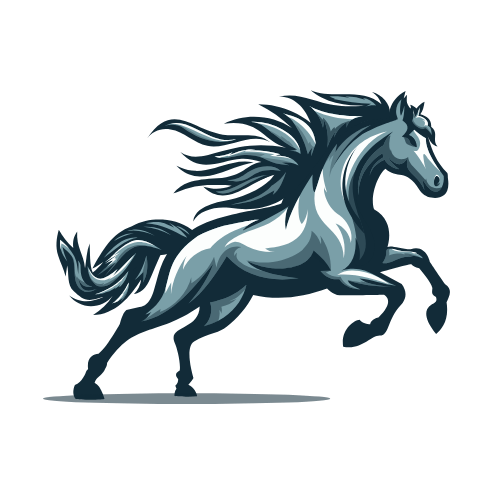


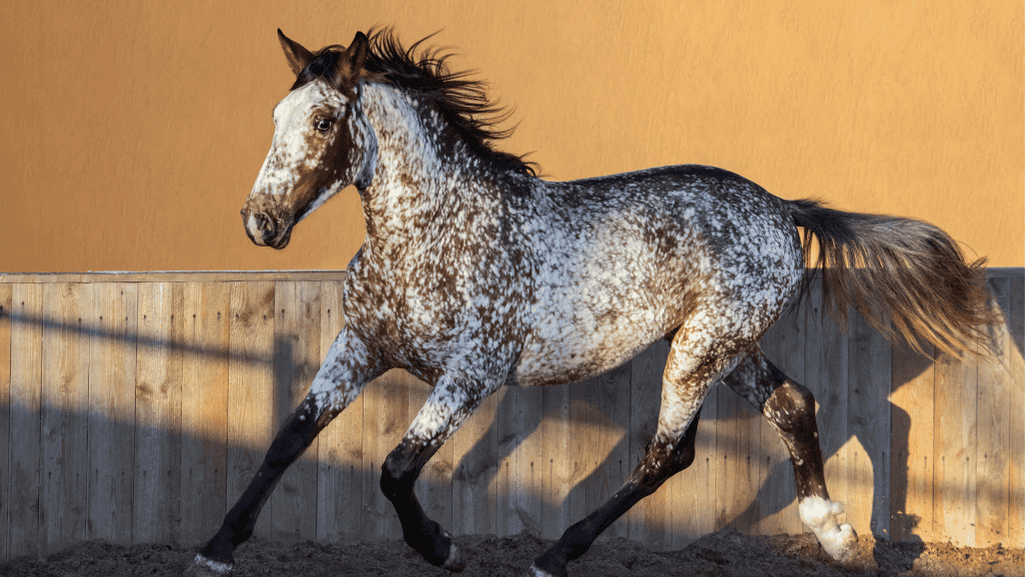

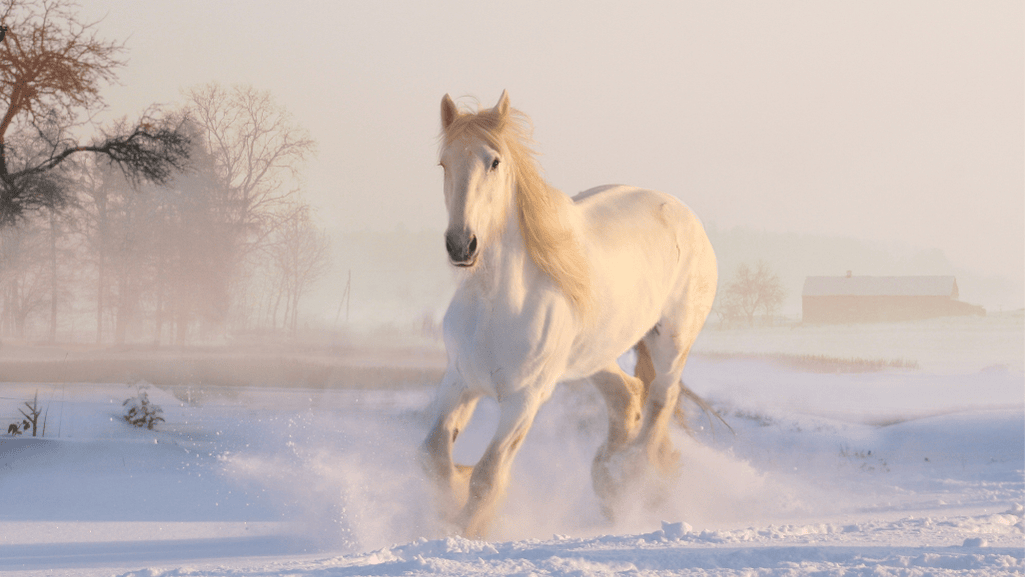
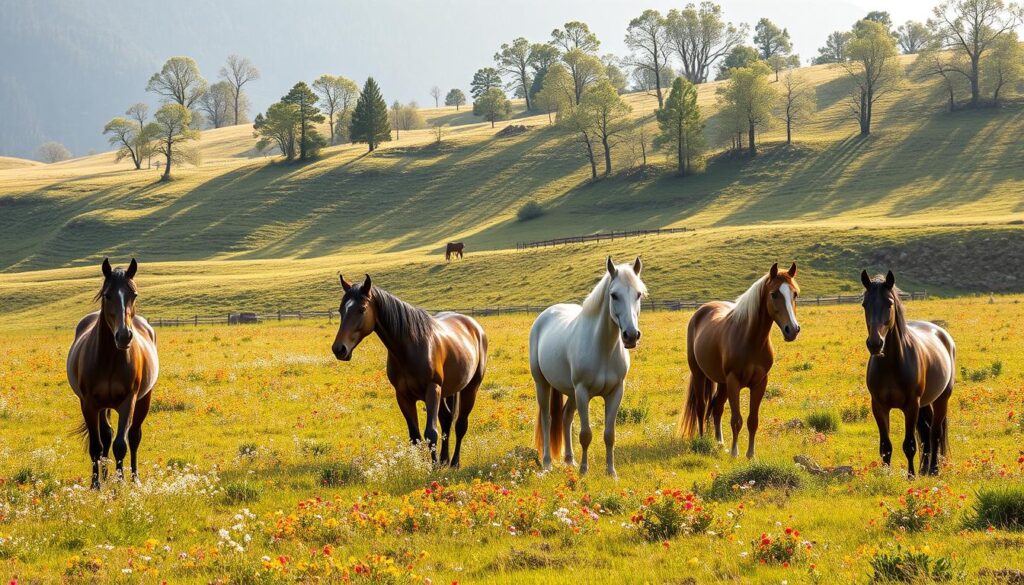
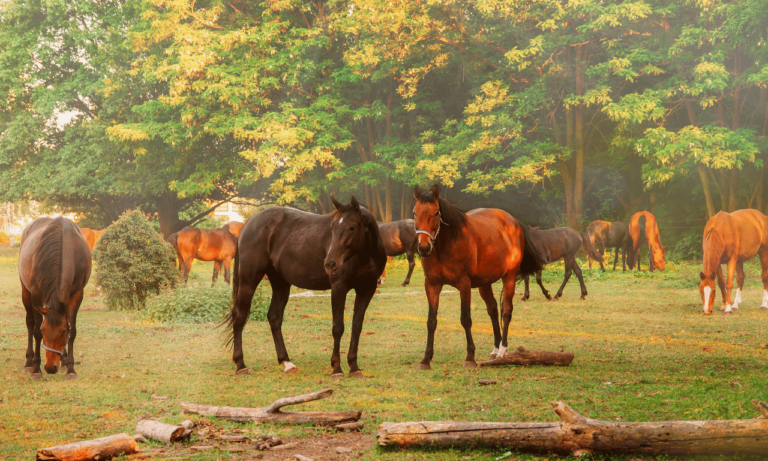
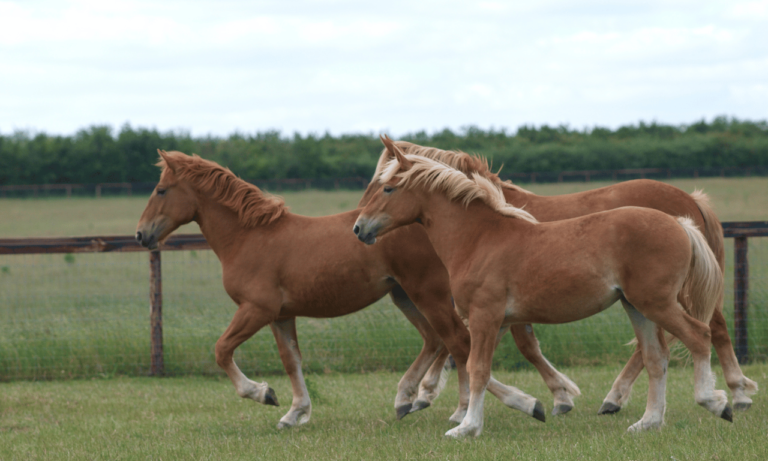
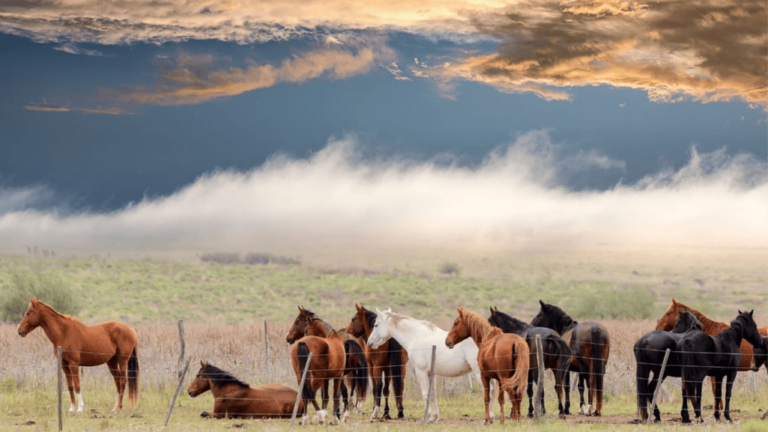


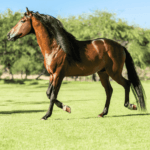

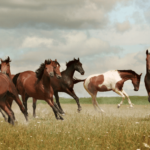
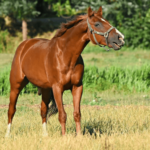
[…] seen in sports, ranch work, and media. They celebrate America’s history and values. Discover Uncommon Horse Breeds: Rare Equines AwaitStart an exciting journey through the world of […]